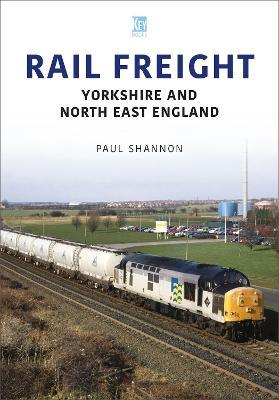Rail Freight: Yorkshire and North East England

Rail Freight: Yorkshire and North East England
In the early 1980s, coal was still the lifeblood of many lines in Yorkshire and the North East, with more than 50 pits still active in the Yorkshire coalfield and more than 20 across County Durham and Northumberland. Operations ranged from the slick merry-go-round services to major power stations such as Drax to small-scale wagonload deliveries to industrial and domestic customers. The steel industry was in full swing, too, with numerous rail-served sites around Sheffield, Scunthorpe and Teesside. The pits closed one by one along with their associated sidings and, in some cases, branch lines. Tyne Dock adapted to industrial change as it switched first from exporting to importing coal and then to importing biomass. Meanwhile, the steel industry is still a major user of rail freight, even though operations on Teesside and around Sheffield are much reduced. Illustrated with over 160 carefully chosen photographs, many of which are previously unpublished, this volume looks at the changing face of rail freight in Yorkshire and the North East. It details the changes in traction, rolling stock and railway infrastructure over four decades.
PRP: 80.64 Lei
Acesta este Pretul Recomandat de Producator. Pretul de vanzare al produsului este afisat mai jos.
72.58Lei
72.58Lei
80.64 LeiLivrare in 2-4 saptamani
Descrierea produsului
In the early 1980s, coal was still the lifeblood of many lines in Yorkshire and the North East, with more than 50 pits still active in the Yorkshire coalfield and more than 20 across County Durham and Northumberland. Operations ranged from the slick merry-go-round services to major power stations such as Drax to small-scale wagonload deliveries to industrial and domestic customers. The steel industry was in full swing, too, with numerous rail-served sites around Sheffield, Scunthorpe and Teesside. The pits closed one by one along with their associated sidings and, in some cases, branch lines. Tyne Dock adapted to industrial change as it switched first from exporting to importing coal and then to importing biomass. Meanwhile, the steel industry is still a major user of rail freight, even though operations on Teesside and around Sheffield are much reduced. Illustrated with over 160 carefully chosen photographs, many of which are previously unpublished, this volume looks at the changing face of rail freight in Yorkshire and the North East. It details the changes in traction, rolling stock and railway infrastructure over four decades.
Detaliile produsului









